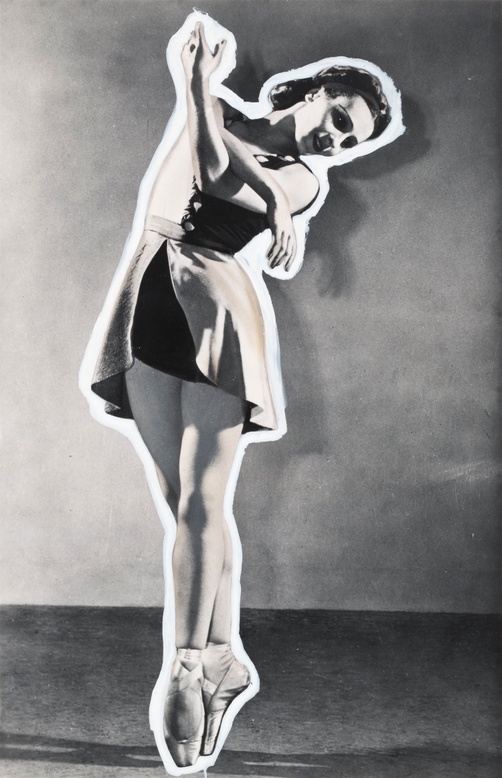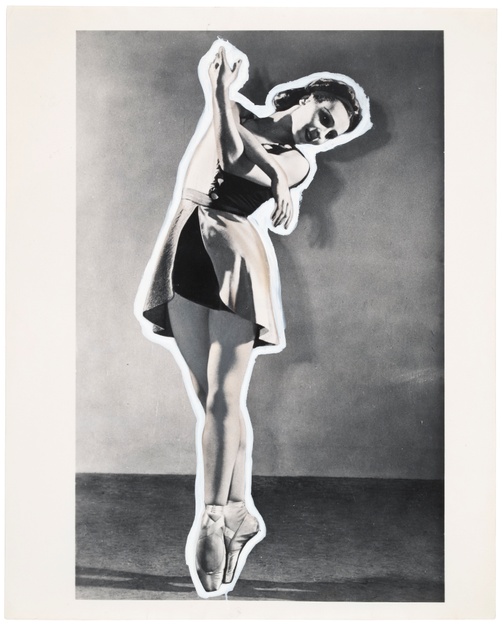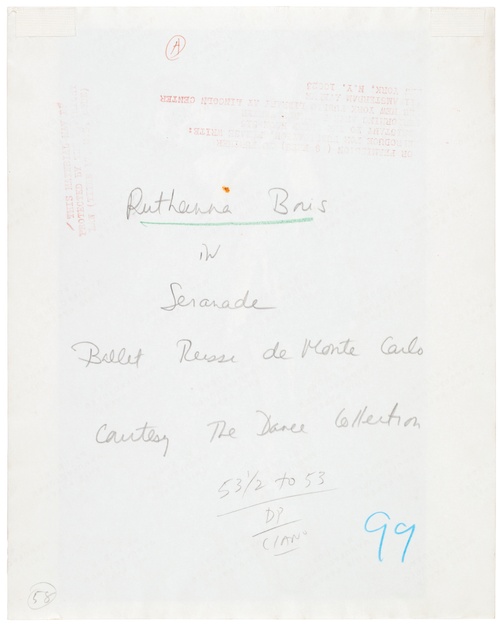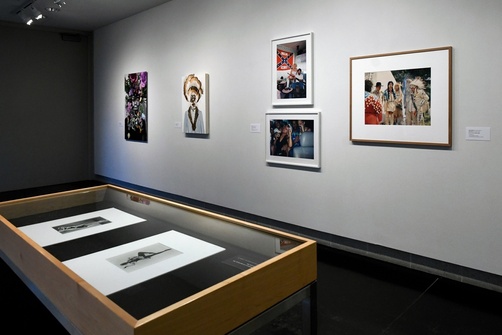





image size: 9 1/4 x 6 1/8 in.
Handwritten in blue pencil, paper verso, lower right: 99
Handwritten in red, paper verso, upper center: A [encircled]
Handwritten in pencil, paper verso, lower left: 58 [encircled]
Two copyright and permissions stamps, paper verso, sideways, upper left, and upside down, upper right
Installation views

Object Label
Ruthanna Boris (1918-2007) was a successful Jewish ballet dancer from Brooklyn. The meaning of her Jewish identity–informed by social treatment, media representations, and institutional access–changed greatly throughout her lifetime wherein she personally faced and resisted anti-Semitism. Some dance instructors would not allow Jews in their classes, and ultimately, her fight for acceptance in the ballet community was a long and painful process. In the 1930s, Jews were seen by many Americans, including respected scholars, as lazy and unassimilable. More specifically, the American public regarded Jewish women dancers as intensely emotional and un-American in appearance and personality. But, by the 1940s and 1950s, Jewish people had essentially “become” white, demonstrating that the boundaries of whiteness change over time. This begs the question: who benefits from shifting definitions of whiteness?
The photograph at right features a 15-year-old Boris dancing en pointe with her arms elegantly crossed at the elbows. Boris performed in George Balanchine’s Serenade and other work by him throughout her career, going on to become a pioneer as one of the first female choreographers in ballet. Her slender figure and vulnerable pose seem to embody ideal femininity today, but her dark hair and features did not reflect the American Anglo-Saxon ideals of the 1930s.
–Dana Keyes-Gibbons ’19
From the exhibition: When and Where I Enter (October 20, 2018 – January 6, 2019)

